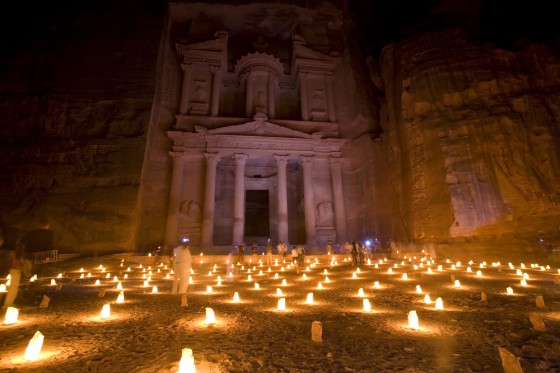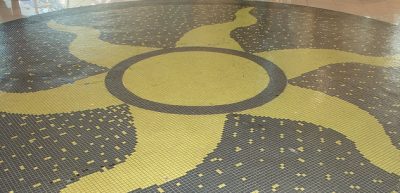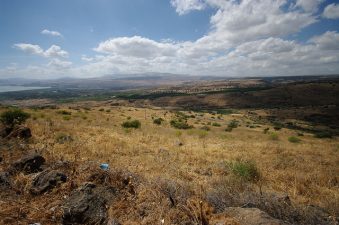Israel’s Negev Desert, Jordan’s Mount Nebo, Medaba and Wadi Rum are a few dark sky destinations for stargazing.
Paris is known as the city of lights. So is Medina Saudi Arabia, Be’er Sheva Israel and Las Vegas, Nevada. We shouldn’t overlook Baltimore Maryland, Varanasi India, Quanzhou China and Milford Pennsylvania. Each of these cities is also known as the city of lights. I’m sure I’ve forgotten a few. Developer Tamouh plans to complete a city of lights project in Abu Dhabi by 2014 and the entire Benelux region of Europe has more than enough eye-watering glare to qualify as one colossal city of lights. The message seems to be that if you want tourists to visit, make sure you have plenty of lights. But that isn’t how it always works.
The first time my family visited Turkey we stayed in a hotel with an unusual lighting scheme. The glowing color of the building’s exterior shifted from green to violet, pink and orange. It was pretty, but we didn’t visit Turkey to see these lights. Many hotels in other parts of the world have similar lights. In fact there is one hotel on Oregon’s Pacific coast that I will never again visit because its security lights disturbed our sleep and completely obscured what should have been a stunning and romantic twilight view of the Pacific Ocean.
We didn’t visit Antalya, Turkey because it was yet another city of lights. We visited Antalya because it was dark. We joined a group of Irish astronomers and witnessed the rare and beautiful spectacle of a total solar eclipse as it passed through the Middle East in the spring of 2006. Tens of thousands of tourists will travel to Cairns Australia or cruise to the South Pacific on November 14th, 2012 in order to witness the beautiful darkness of another total solar eclipse.
But dark skies aren’t just for total eclipses. Comet Hyakutake was all but invisible from any populated place, but its ghostly tail seemed to stretch more than 1/4 of the way across the sky when I viewed it from a dark primordial forest in central Florida. Similarly, The northern lights, comets, meteor showers, zodiacal light, the milky way and many other beautiful sights can only be seen from dark skies. But with the growing problem of light pollution, dark skies are becoming harder to find. So dark sky ecotourism is a growing industry.
No city has yet declared itself, “the city of dark”, but a growing number of places have been set aside as dark-sky preserves and they are attracting dark-sky tourists. Yellowstone was set aside as the world’s first national park in 1872 and various other desert, wetland and marine preserves have been set aside since then. But it wasn’t until 1999 that the world’s first dark sky preserve was created in the Torrance Barrens of Ontario Canada.
More than 20 dark sky preserves have been created since. Many are in Canada and the US but the entire Isle of Sark (UK), parts of Scotland, France, Poland, the Czech republic and New Zealand. Some of these dark sky preserves are recognized by the International Darksky Association (IDA).
Israel’s Negev Desert, Jordan’s Mount Nebo, Medaba and Wadi Rum region have not yet been formally protected or recognized by the IDA, but they do have moderately dark skies and are already attracting dark-sky tourists. One of the beauties of dark sky preserves is that it favors small towns and villages, rural places which don’t necessarily have to have stunning landscape features. The places without night life are more likely to have this kind of night beauty.
So perhaps some day when Paris and dozens of other cities brag that they are “the city of lights”, the people of your village will laugh and reply, “Yes, but we are the village of the stars!”
Photo of Petra by candlelight via Shutterstock





Deserts are definitely dark sky destinations, especially for light skinned European folks who can’t stand to be in 50 degree C heat.